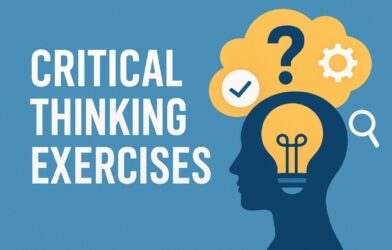Photography is a wonderful hobby that allows you to capture the beauty of the world around you, express your creativity, and preserve memories. Whether you’re looking to document your travels, capture family moments, or explore artistic expression, photography can be a rewarding and fulfilling pursuit. This beginner’s guide will help you get started on your photography journey, offering essential tips and advice to help you develop your skills and find joy in capturing moments.
Choose the Right Equipment
The first step in starting your photography hobby is selecting the right equipment. While professional photographers often use high-end cameras and lenses, beginners can start with more affordable options that still offer excellent quality.
Selecting a Camera
- Smartphones: Modern smartphones come equipped with high-quality cameras that are perfect for beginners. They are convenient, always with you, and offer various features such as portrait mode and night mode.
- Compact Cameras: Also known as point-and-shoot cameras, these are user-friendly and portable, making them a great option for casual photography.
- Mirrorless Cameras: These cameras are lightweight and offer interchangeable lenses, providing more flexibility and control over your shots.
- DSLR Cameras: Digital Single-Lens Reflex cameras are a bit bulkier but offer superior image quality, manual controls, and a wide range of lenses.
Essential Accessories
In addition to a camera, consider investing in a few key accessories:
- Tripod: Helps stabilize your camera for sharp, clear shots, especially in low light.
- Camera Bag: Protects your equipment and makes it easier to carry.
- Extra Batteries and Memory Cards: Ensure you never run out of power or storage space during a shoot.
- Cleaning Kit: Keeps your lenses and camera sensor free from dust and smudges.
Learn the Basics of Photography
Understanding the basic principles of photography is crucial for capturing great images. Familiarize yourself with concepts such as composition, exposure, and lighting.
Mastering Composition
Composition refers to how elements are arranged within a photo. Good composition can make an ordinary scene look extraordinary. Here are some fundamental rules:
- Rule of Thirds: Imagine your frame divided into nine equal parts by two horizontal and two vertical lines. Place important elements along these lines or at their intersections to create a balanced composition.
- Leading Lines: Use natural lines in your scene, such as roads, fences, or rivers, to guide the viewer’s eye toward the main subject.
- Framing: Use elements in your environment to frame your subject, such as archways, windows, or tree branches. This adds depth and focus to your image.
Understanding Exposure
Exposure determines how light or dark an image appears. It is controlled by three settings:
- Aperture: The size of the lens opening, which affects the depth of field (the area in focus) and the amount of light entering the camera.
- Shutter Speed: The duration the shutter is open, affecting motion blur and light exposure.
- ISO: The camera’s sensitivity to light. Higher ISO settings allow for shooting in low light but can introduce noise (graininess).
Utilizing Lighting
Lighting is a critical element in photography. Natural light, such as sunlight, can create beautiful effects, but understanding how to use artificial light is also important. Here are some tips:
- Golden Hour: Shoot during the golden hour (shortly after sunrise and before sunset) for soft, warm light and long shadows.
- Avoid Harsh Light: Midday sunlight can be harsh and create strong shadows. Look for shaded areas or use diffusers to soften the light.
- Experiment with Flash: Learn how to use your camera’s flash or an external flash to fill in shadows and create even lighting.
Practice and Experiment
The best way to improve your photography skills is through practice and experimentation. Don’t be afraid to try new techniques and make mistakes. Each photo you take is an opportunity to learn and grow.
Tips for Practicing
- Shoot Regularly: Make photography a regular part of your routine. The more you practice, the better you’ll become.
- Try Different Genres: Explore various photography genres such as landscape, portrait, macro, and street photography to find what you enjoy most.
- Analyze Your Photos: Review your photos critically to understand what worked and what didn’t. Pay attention to composition, exposure, and focus.
- Seek Feedback: Join photography clubs or online communities where you can share your work and receive constructive feedback from other photographers.
Organize and Showcase Your Photos
As you start building your collection of photos, it’s important to organize them effectively and find ways to showcase your best work.
Creating Photo Books
One of the most enjoyable ways to display your photography is by creating photo books. These allow you to curate your favorite shots and tell a story through images. Photo books make great gifts and are a wonderful way to preserve memories.
Digital Organization
- File Management: Create a logical file structure on your computer, organizing photos by date, event, or subject.
- Photo Editing Software: Use software like Adobe Lightroom or Photoshop to edit and enhance your images. Even basic adjustments to exposure, contrast, and color balance can significantly improve your photos.
- Backup Your Photos: Regularly back up your photos to an external hard drive or cloud storage to prevent loss.
Sharing Your Work
- Social Media: Share your photos on platforms like Instagram, Facebook, and Pinterest to reach a wide audience and connect with other photographers.
- Personal Website or Blog: Create a personal website or blog to showcase your portfolio and document your photography journey.
- Prints and Exhibits: Consider printing your best photos and participating in local art exhibits or setting up a small gallery display.
Continuously Learn and Grow
Photography is a constantly evolving field, and there is always something new to learn. Stay curious and keep honing your skills.
Educational Resources
- Books and Magazines: Read photography books and subscribe to magazines to learn about techniques, trends, and the work of other photographers.
- Online Courses and Tutorials: Take advantage of online courses and tutorials to deepen your knowledge and learn new skills.
- Workshops and Classes: Attend workshops and classes to gain hands-on experience and learn from professionals.
Conclusion
Starting a hobby in photography can be incredibly rewarding, allowing you to capture moments, express your creativity, and continuously learn and grow. By choosing the right equipment, mastering the basics, practicing regularly, organizing your photos, and showcasing your work, you can develop your skills and enjoy the art of photography. Embrace the journey, and let your passion for photography flourish.














